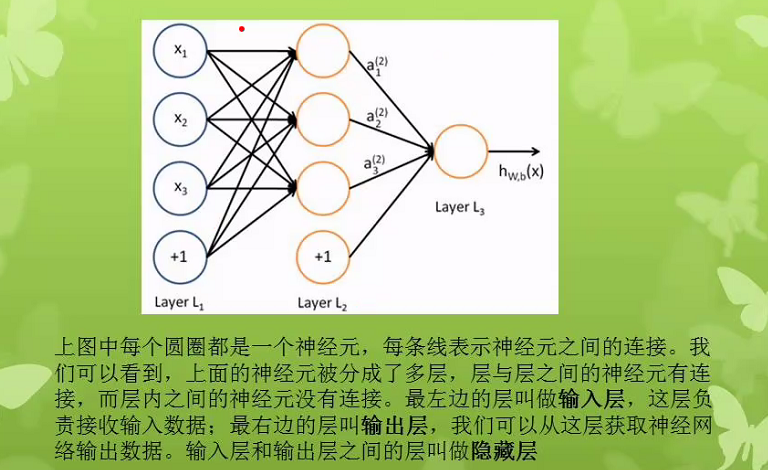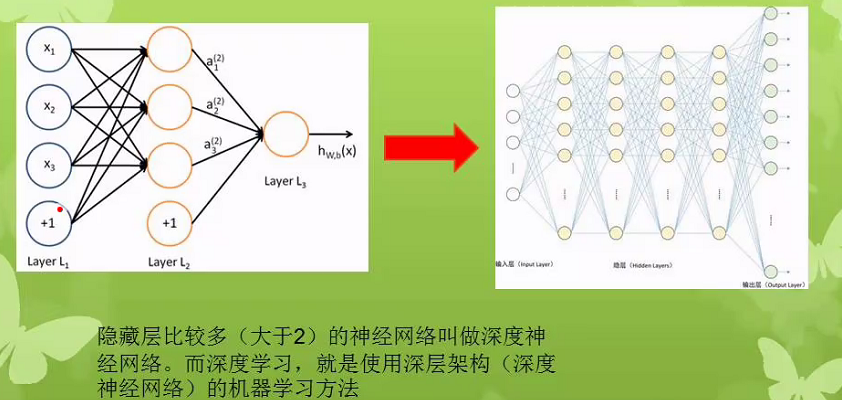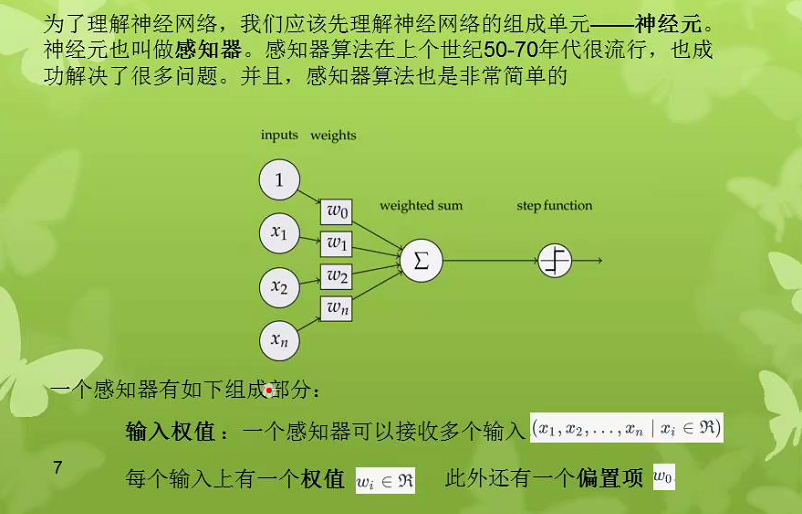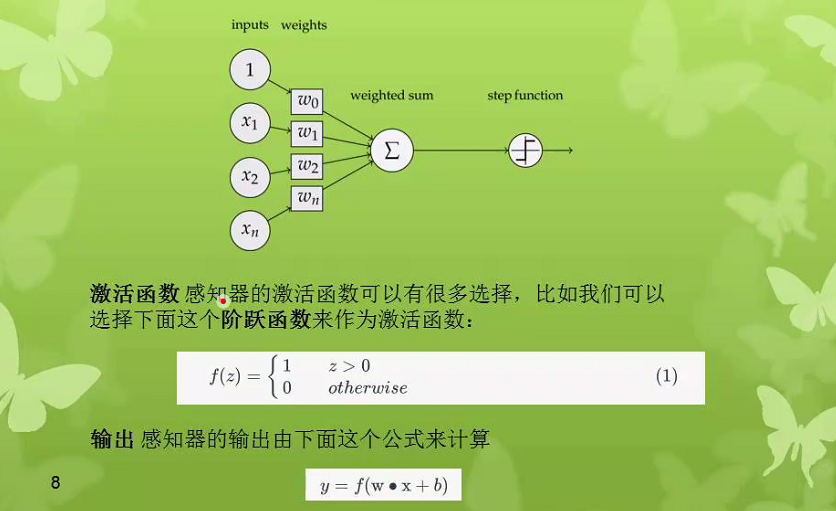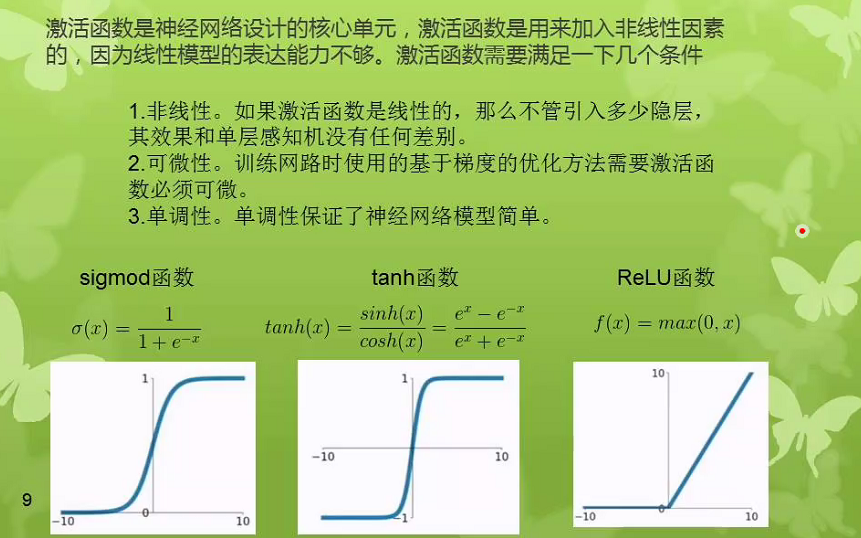一、基本结构
神经网络基本结构
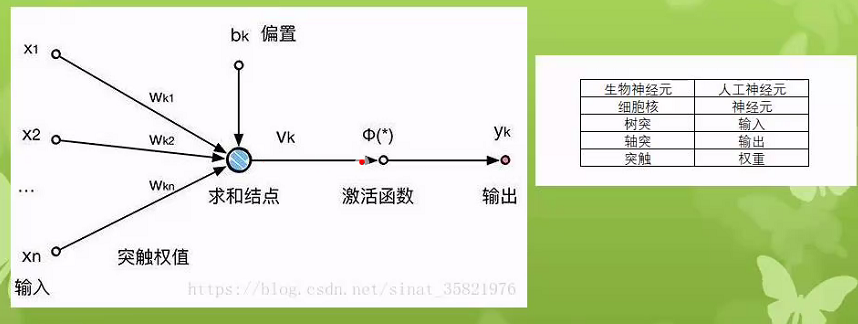
何为深度学习?
二、感知器和激活函数
感知器
激活函数(其中w和x为向量点乘;b为偏置,w0)
激活函数的选择
三、感知器的训练
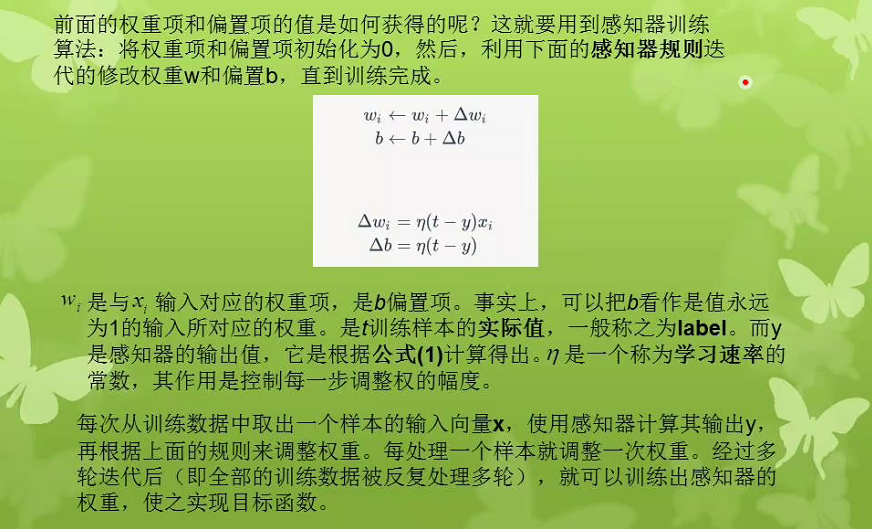
四、简单代码实现
from functools import reduceclass Perceptron(object):'''构造函数的初始化'''def __init__(self,input_num,activator):'''构造函数的初始化'''self.activator = activatorself.weights = [0.0 for _ in range(input_num)]self.bias = 0.0def __str__(self):'''打印学习后的权重值和偏置项'''return 'weights\t:%s\nbias\t:%f\n' %(self.weights,self.bias)def predict(self,input_vec):'''输入向量,输出感知器的计算结果'''return self.activator(reduce(lambda a,b: a+b,list(map(lambda x,w: x*w,input_vec,self.weights)),0.0)+self.bias)def train(self,input_vecs,labels,iteration,rate):'''输入训练数据:一组向量、与每个向量对应的label;以及训练轮数、学习率'''for i in range(iteration):self._one_iteration(input_vecs,labels,rate)def _one_iteration(self,input_vecs,labels,rate):'''迭代,把所有的训练数据过一遍'''samples = zip(input_vecs,labels)for (input_vec,label) in samples:output = self.predict(input_vec)self._update_weights(input_vec,output,label,rate)def _update_weights(self,input_vec,output,label,rate):'''按照感知器规则更新权重'''delta = label - outputself.weights = map(lambda x, w:w+rate*delta*x,input_vec,self.weights)self.weights = list(self.weights)self.bias += rate*deltadef f(x):'''定义激活函数'''return 1 if x>0 else 0def get_training_dataset():'''训练数据'''input_vecs = [[1,1],[0,0],[1,0],[0,1]]labels = [1,0,0,0]return input_vecs,labelsdef train_and_perceptron():'''训练感知器'''p = Perceptron(2,f)input_vecs,labels = get_training_dataset()p.train(input_vecs,labels,10,0.1)return pif __name__ == '__main__':and_perception = train_and_perceptron()print(and_perception)print('1 and 1 = %d' % and_perception.predict([1,1]))print('0 and 0 = %d' % and_perception.predict([0,0]))print('1 and 0 = %d' % and_perception.predict([1,0]))print('0 and 1 = %d' % and_perception.predict([0,1]))
运行结果:
